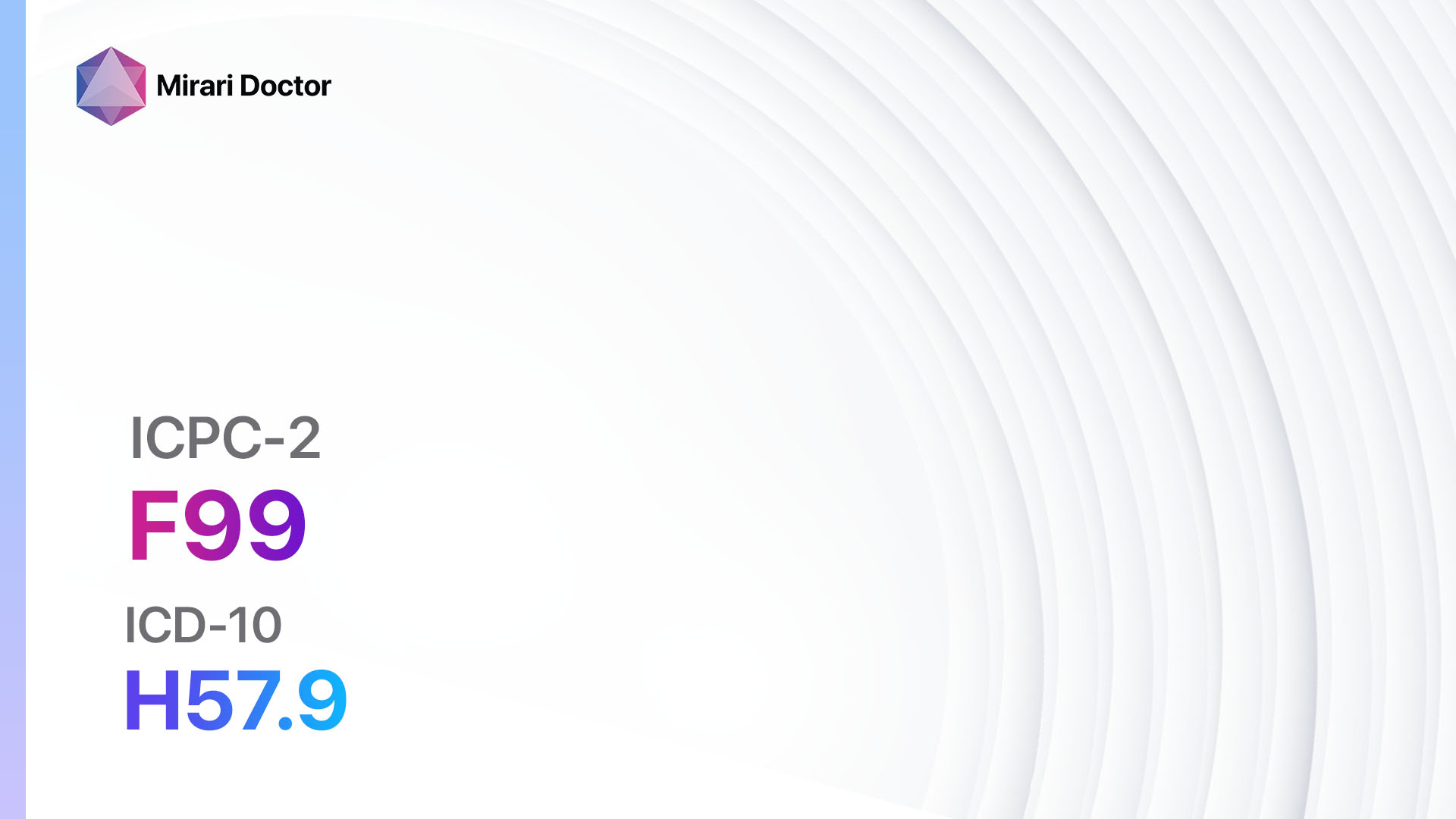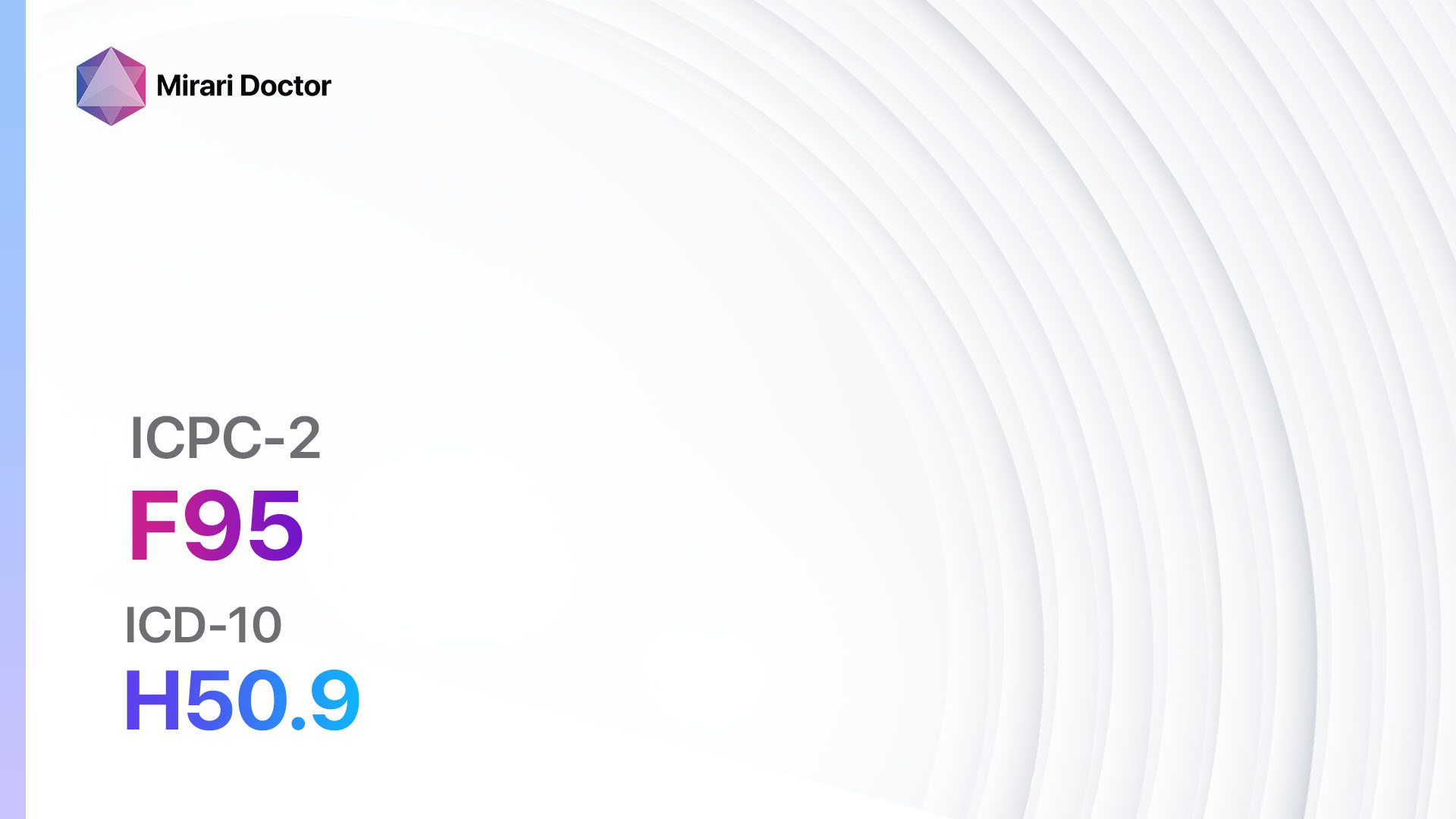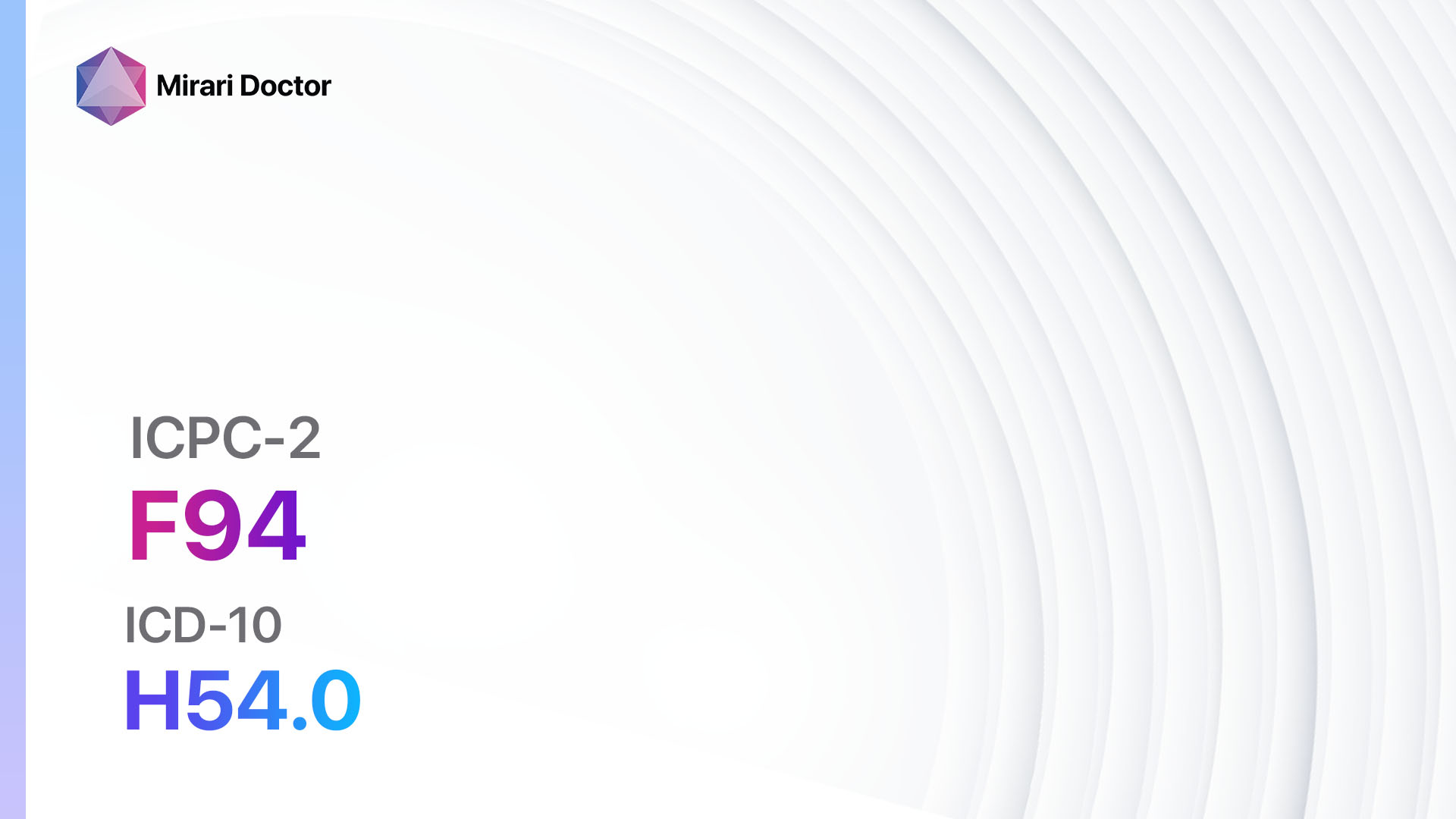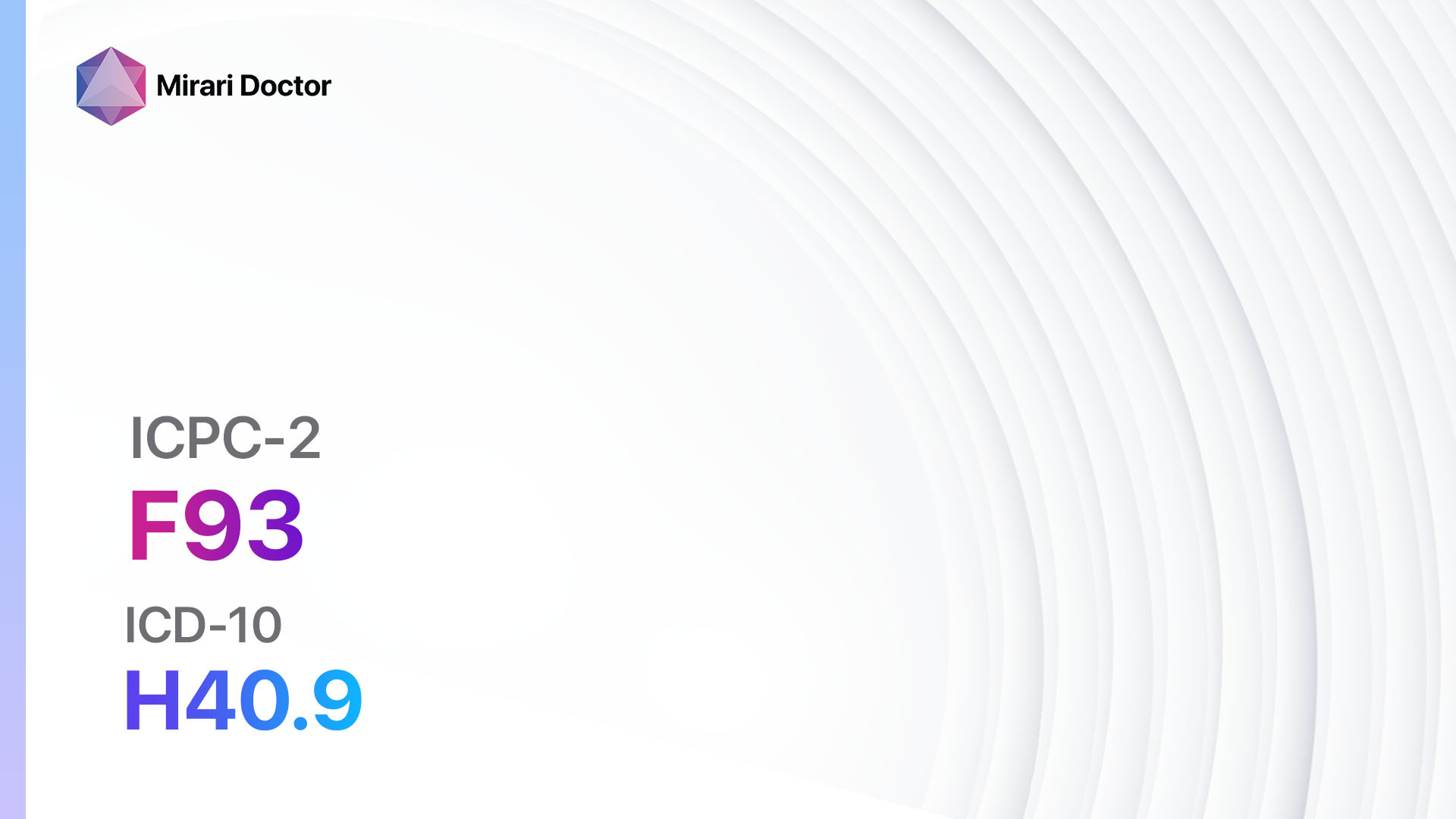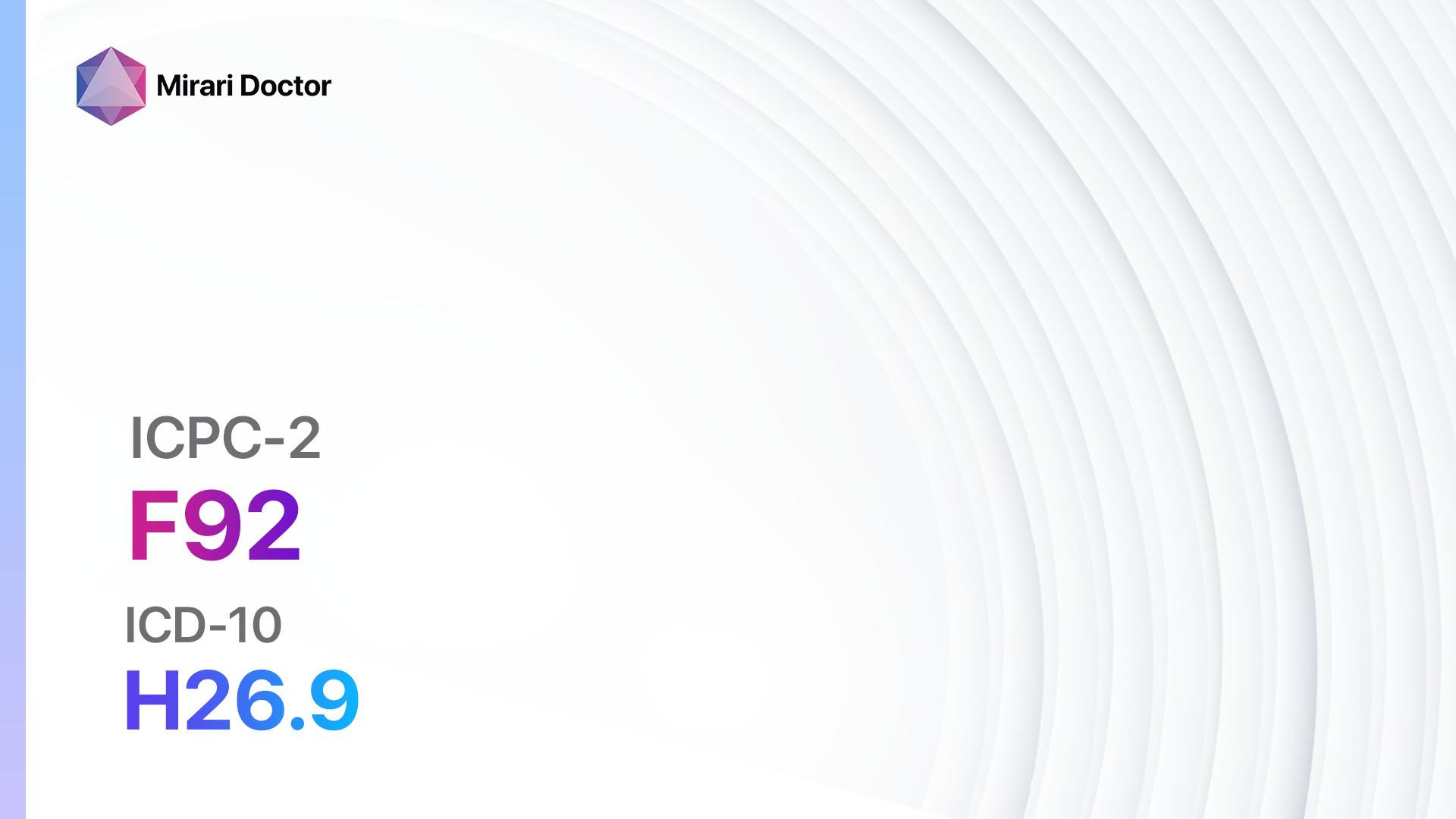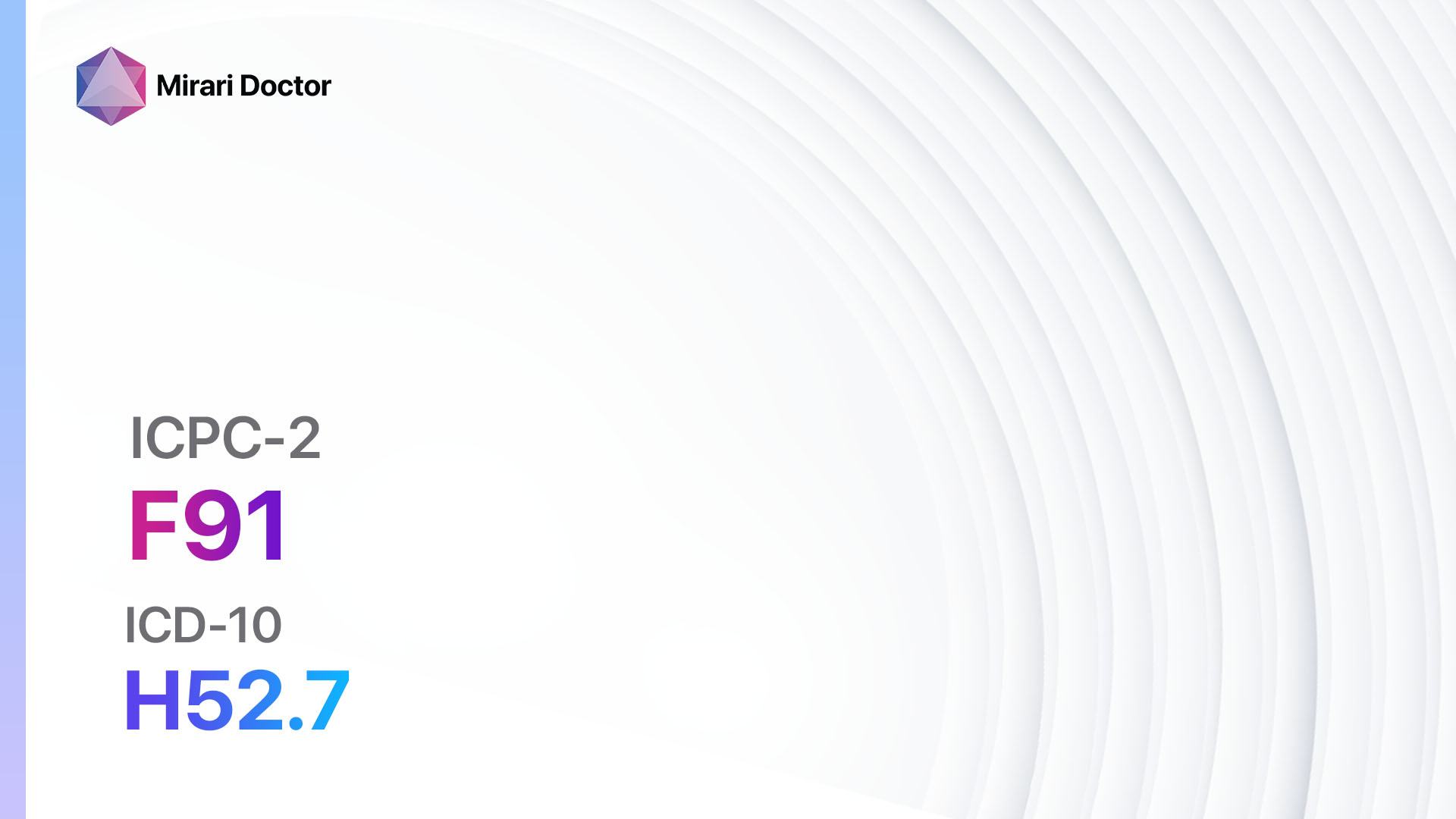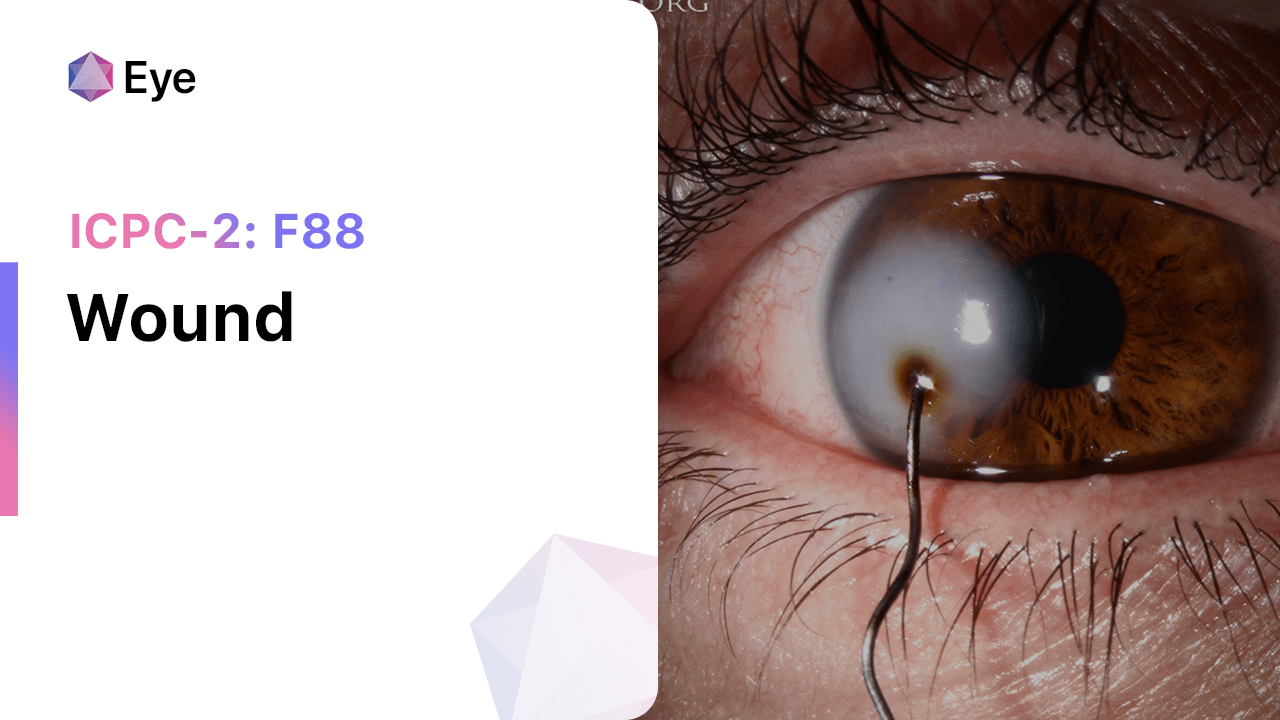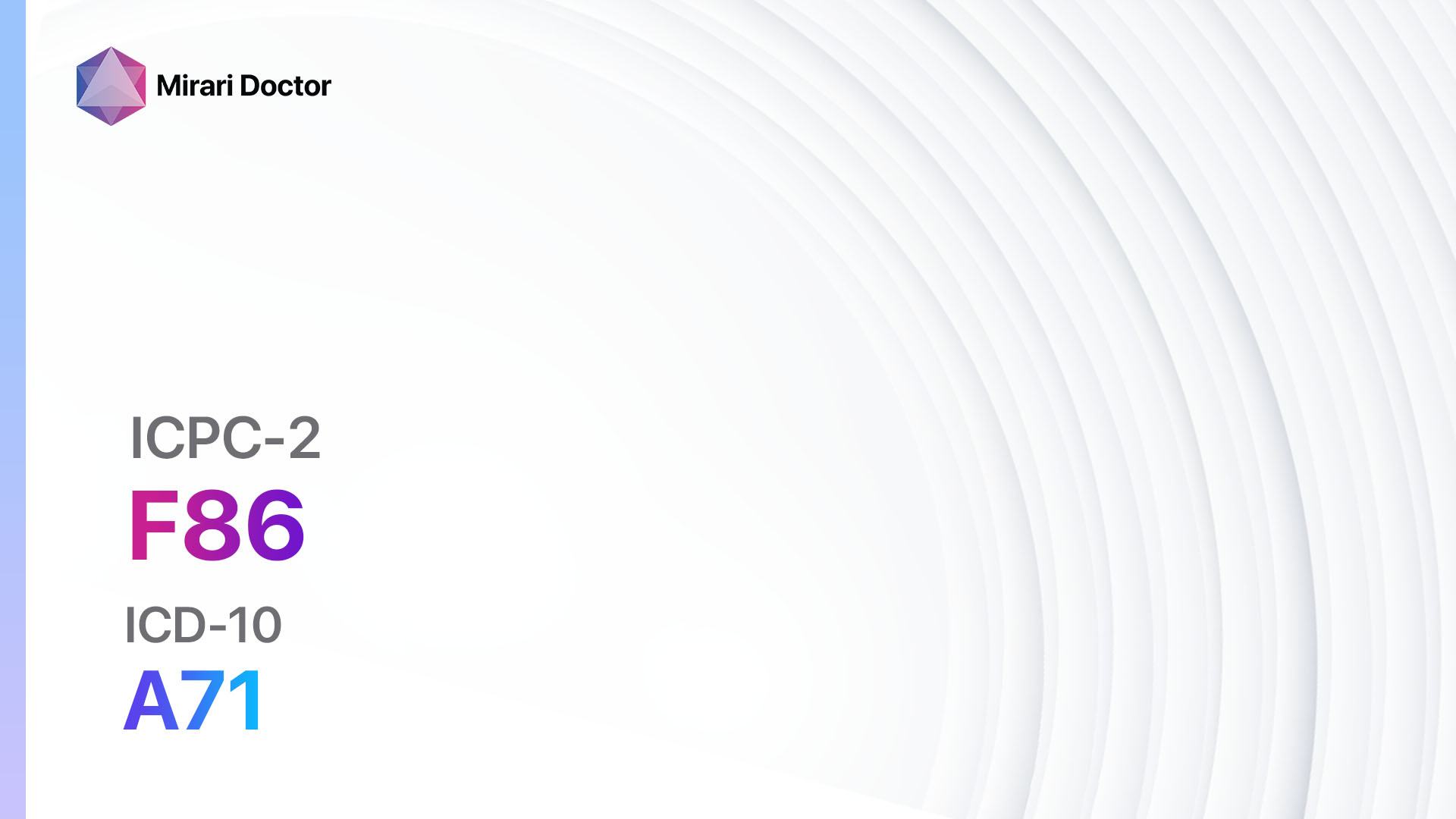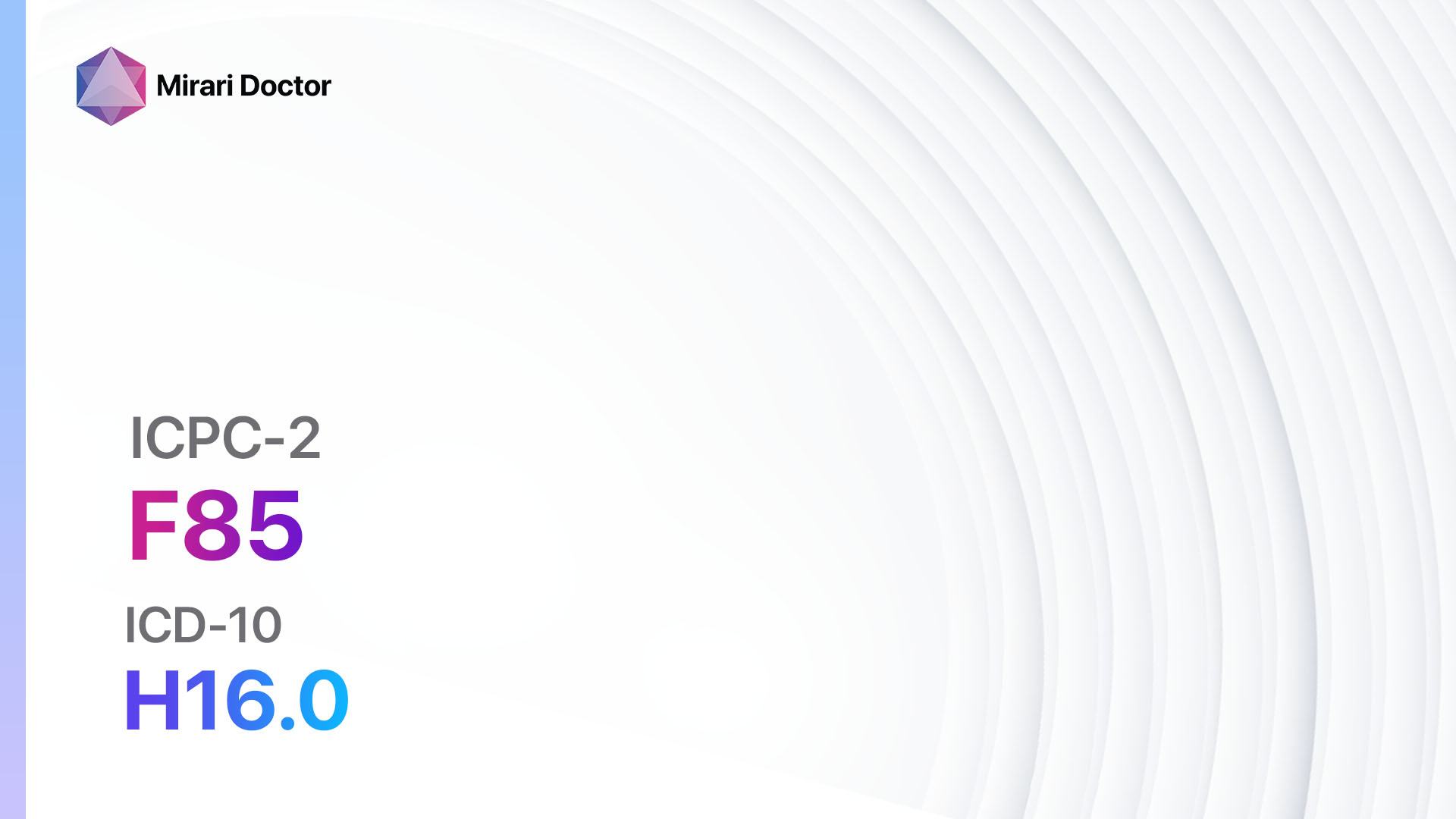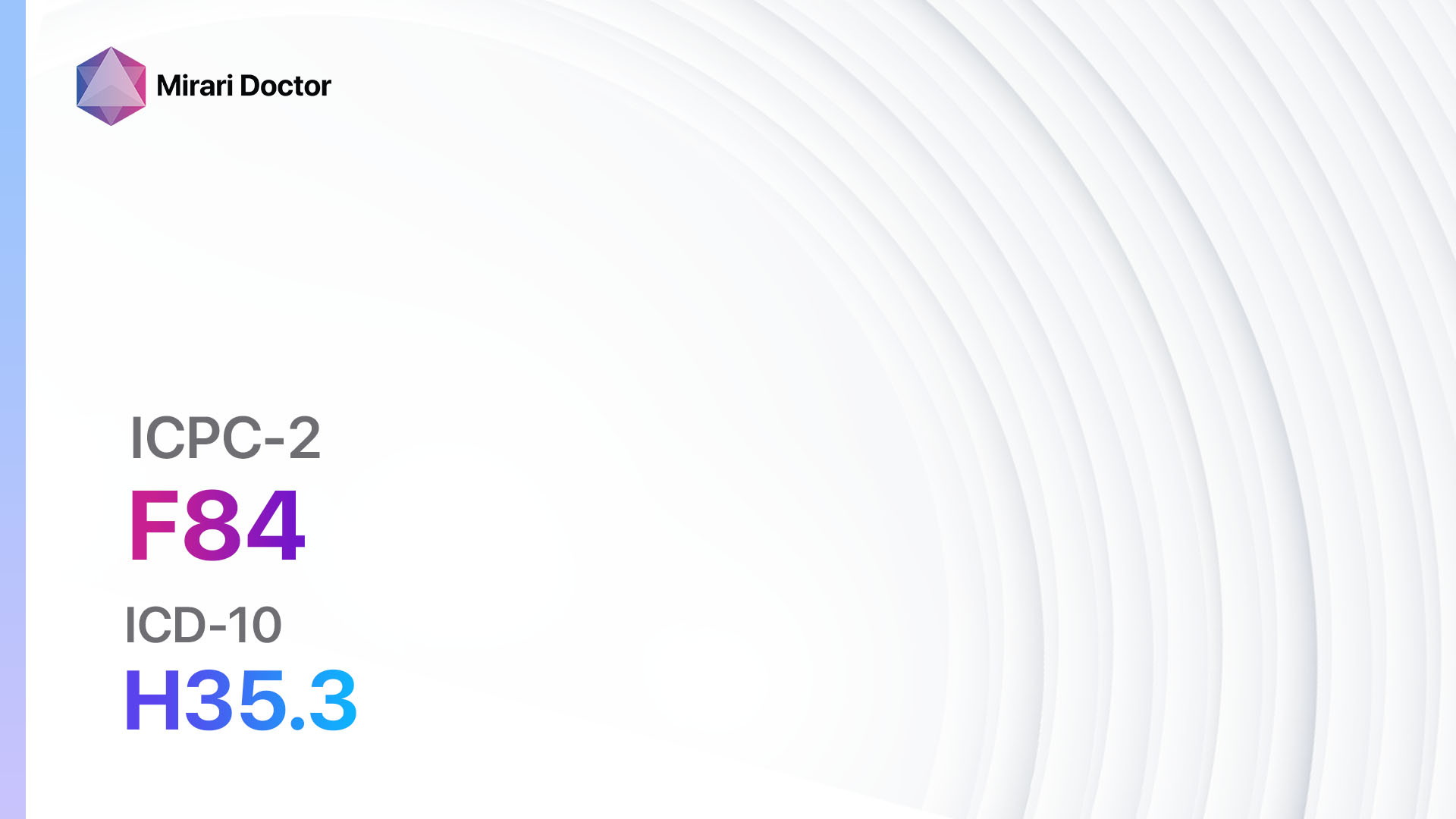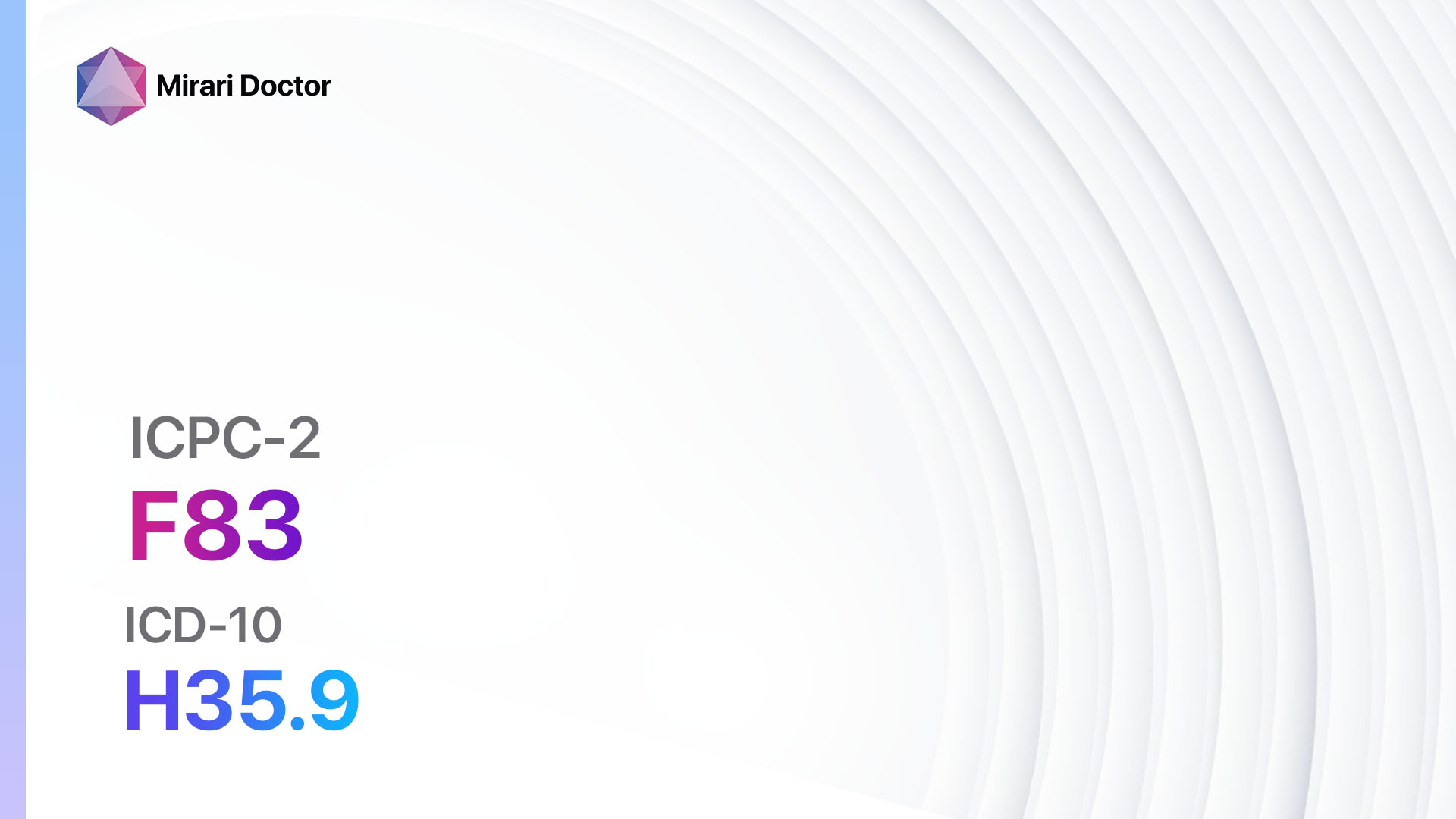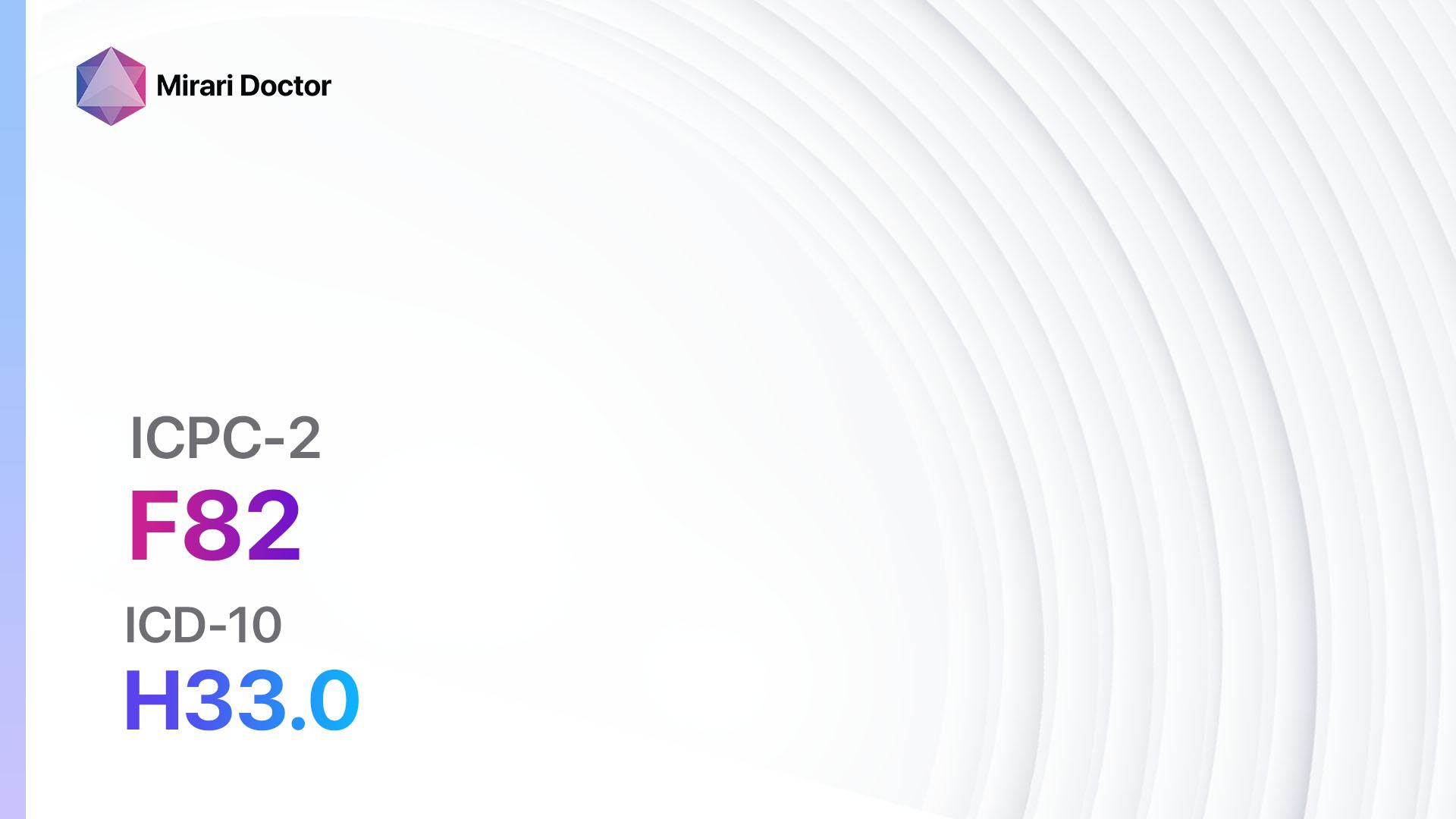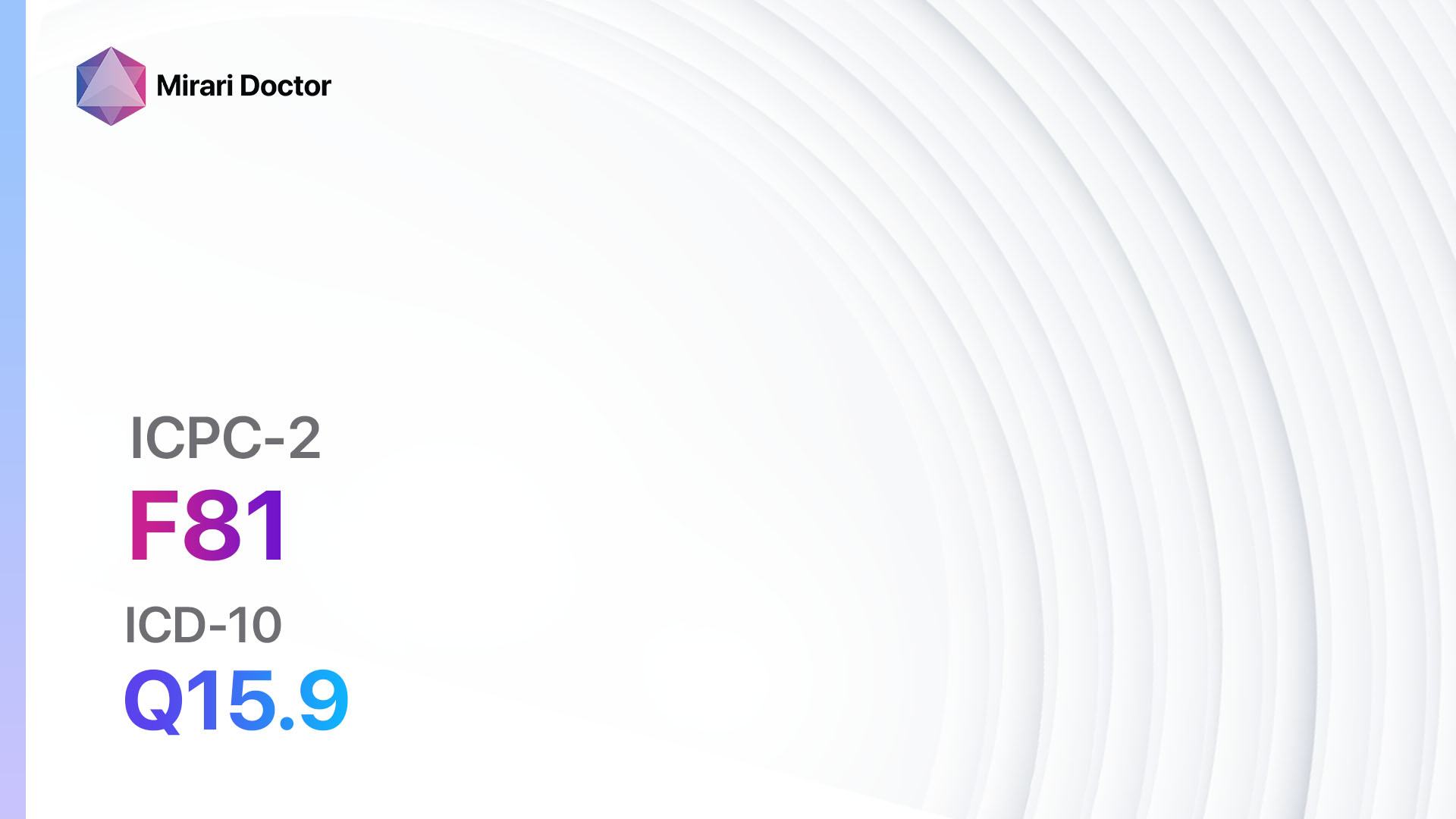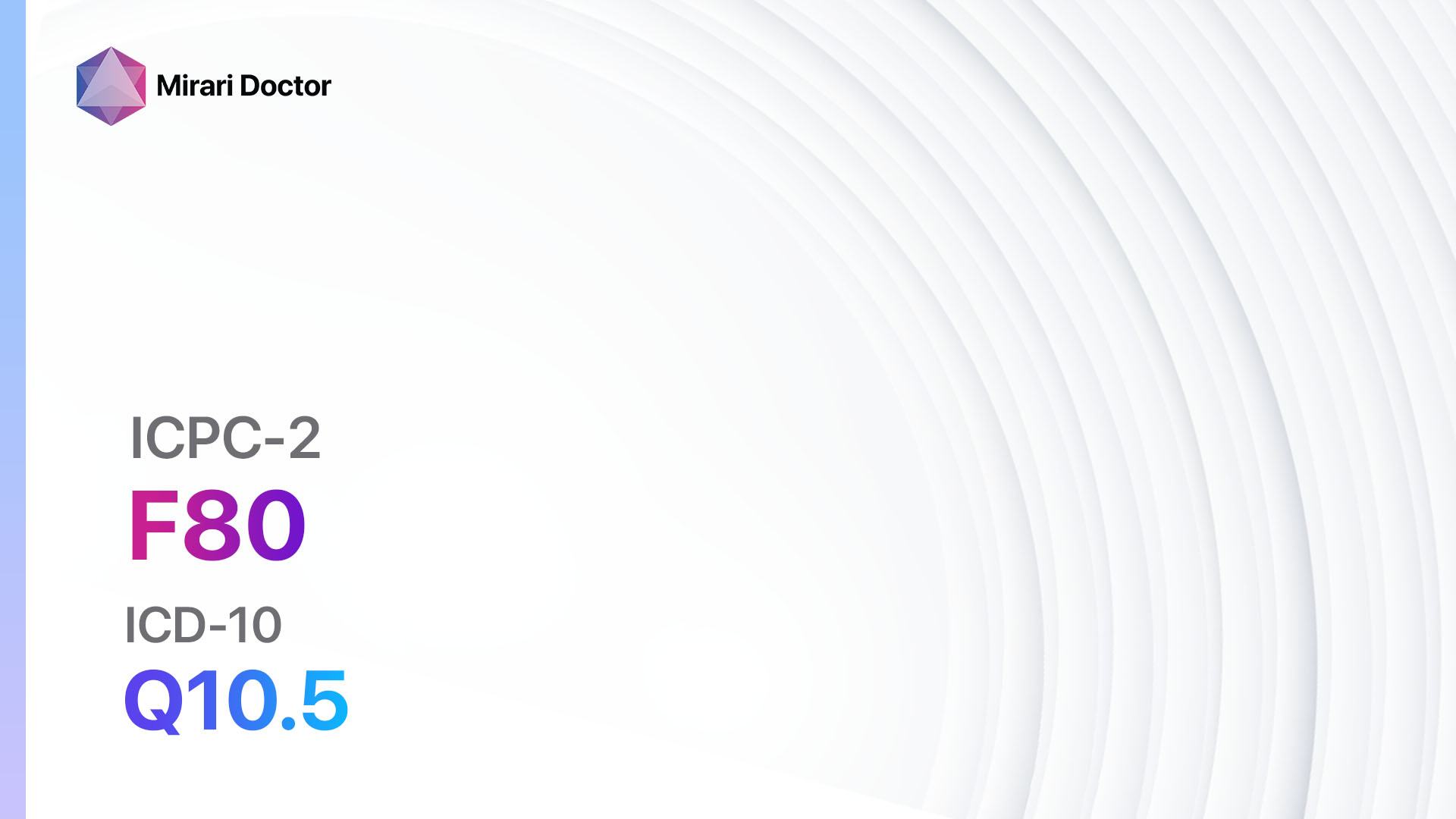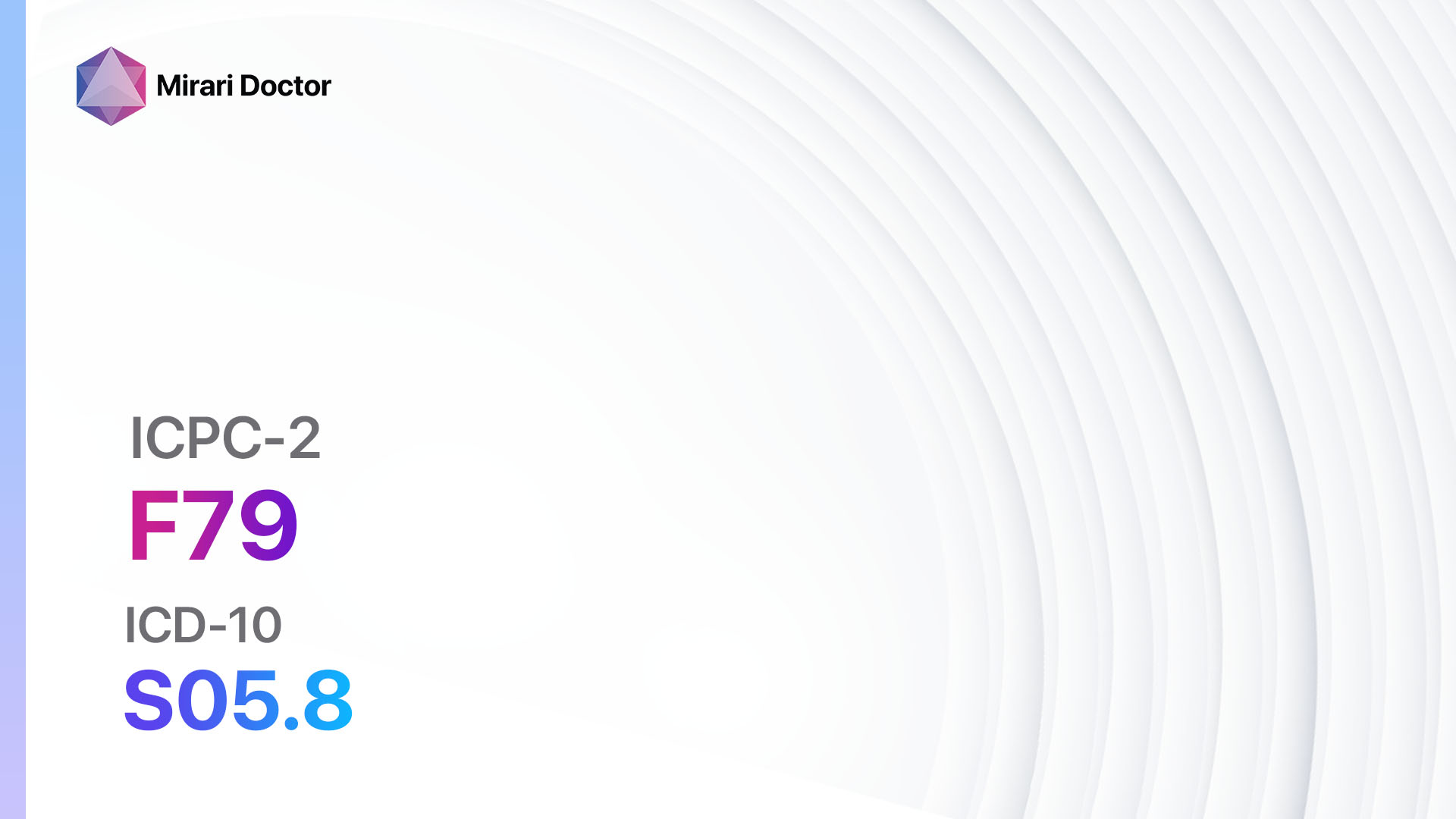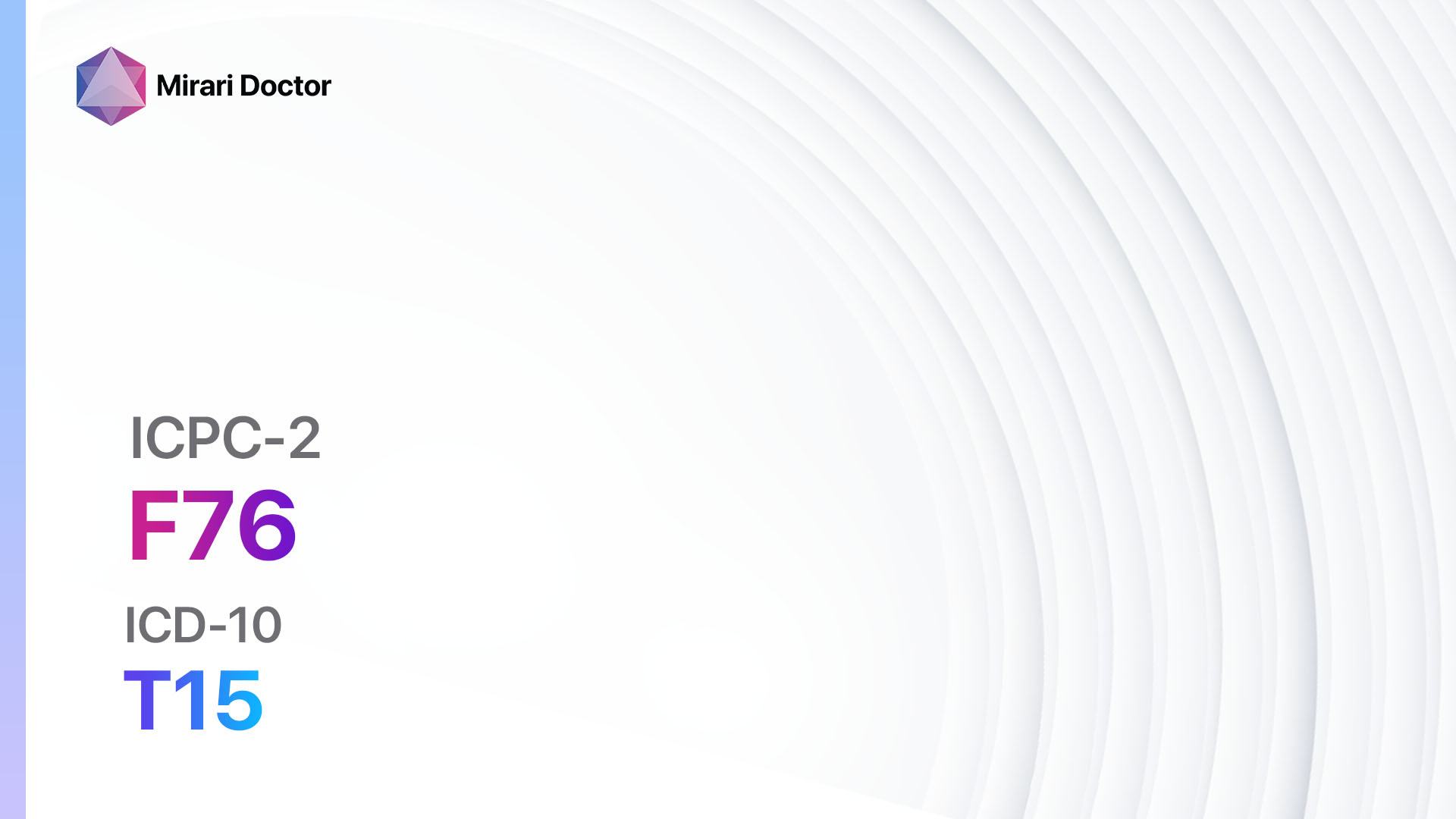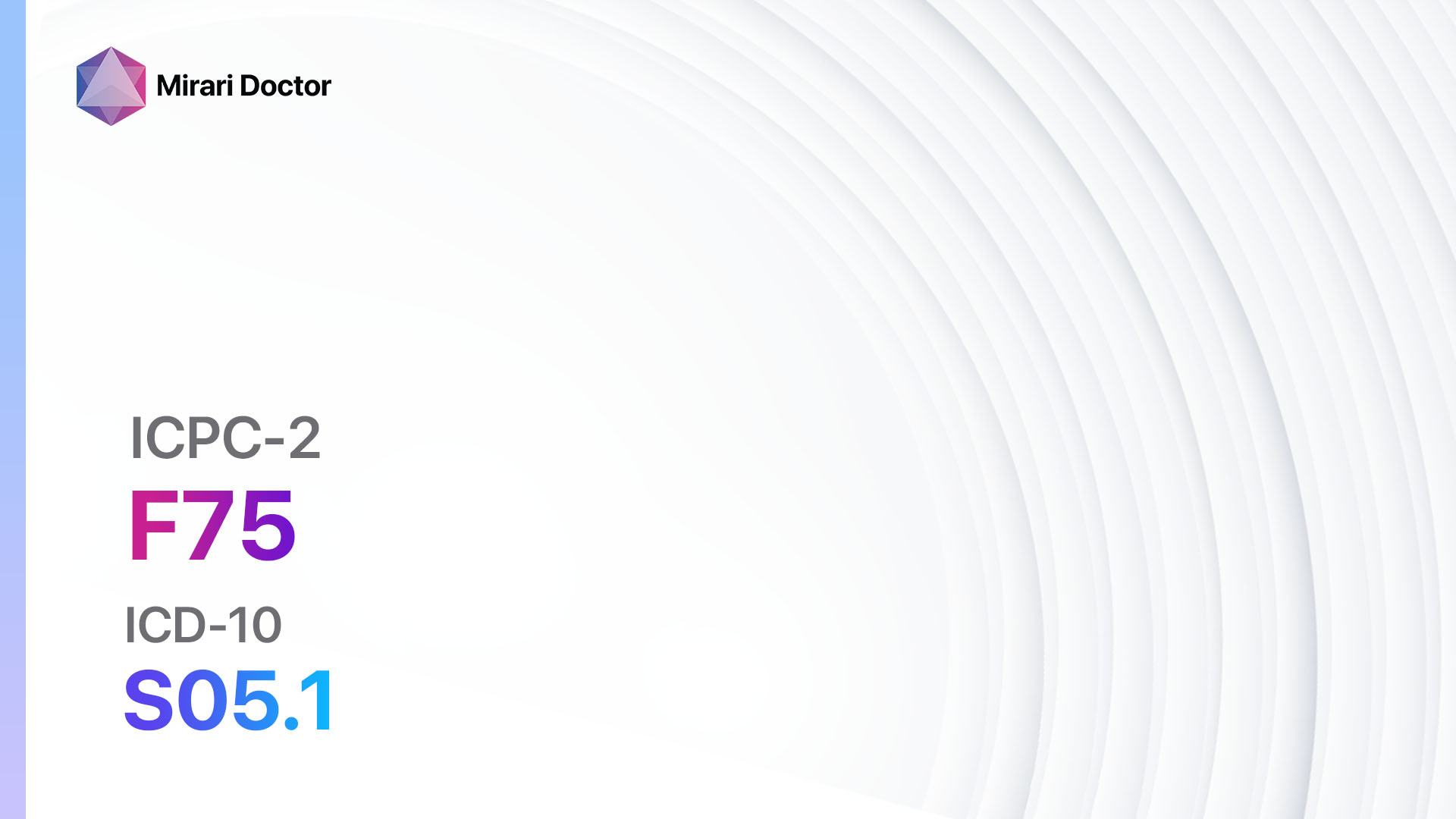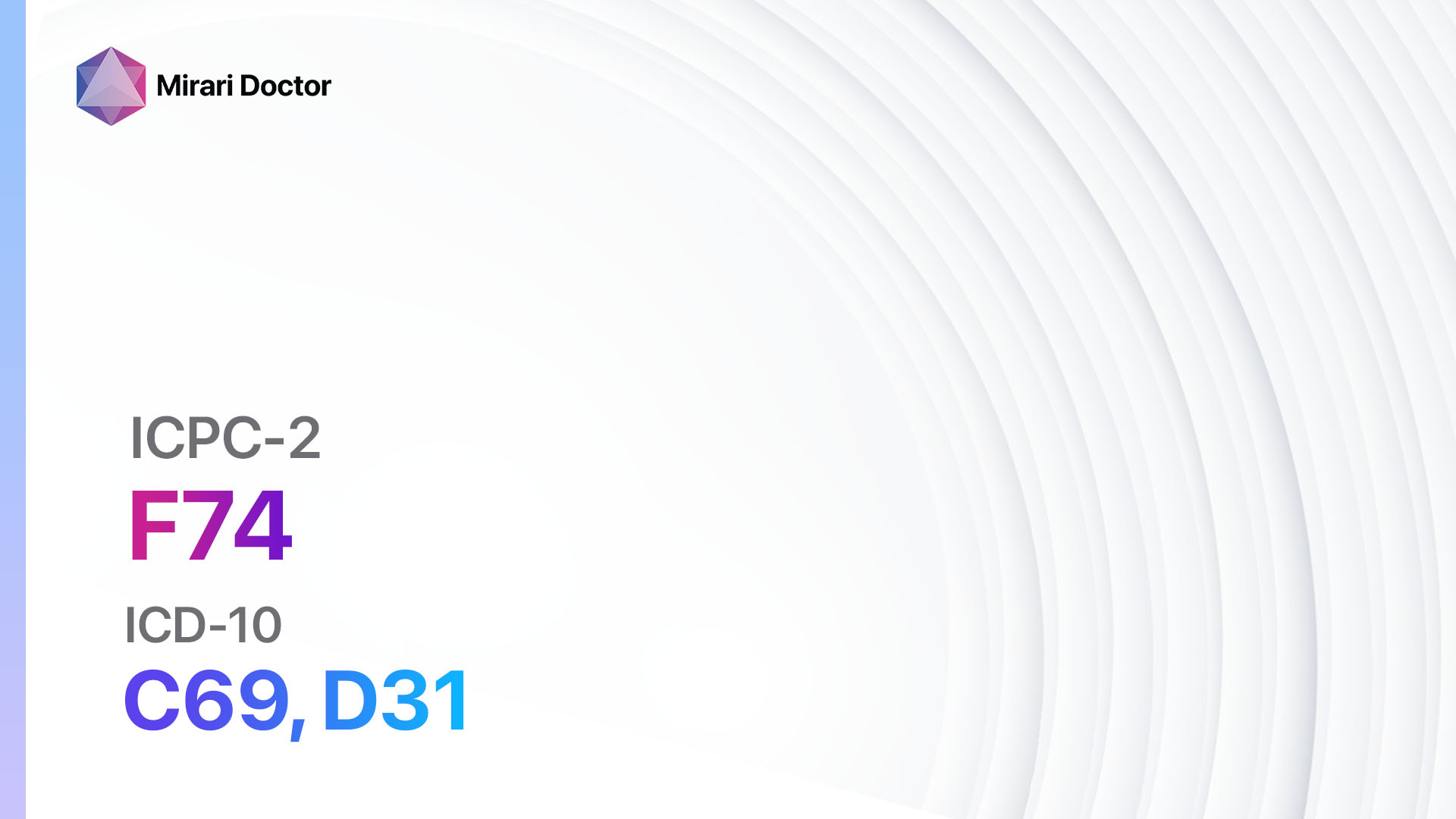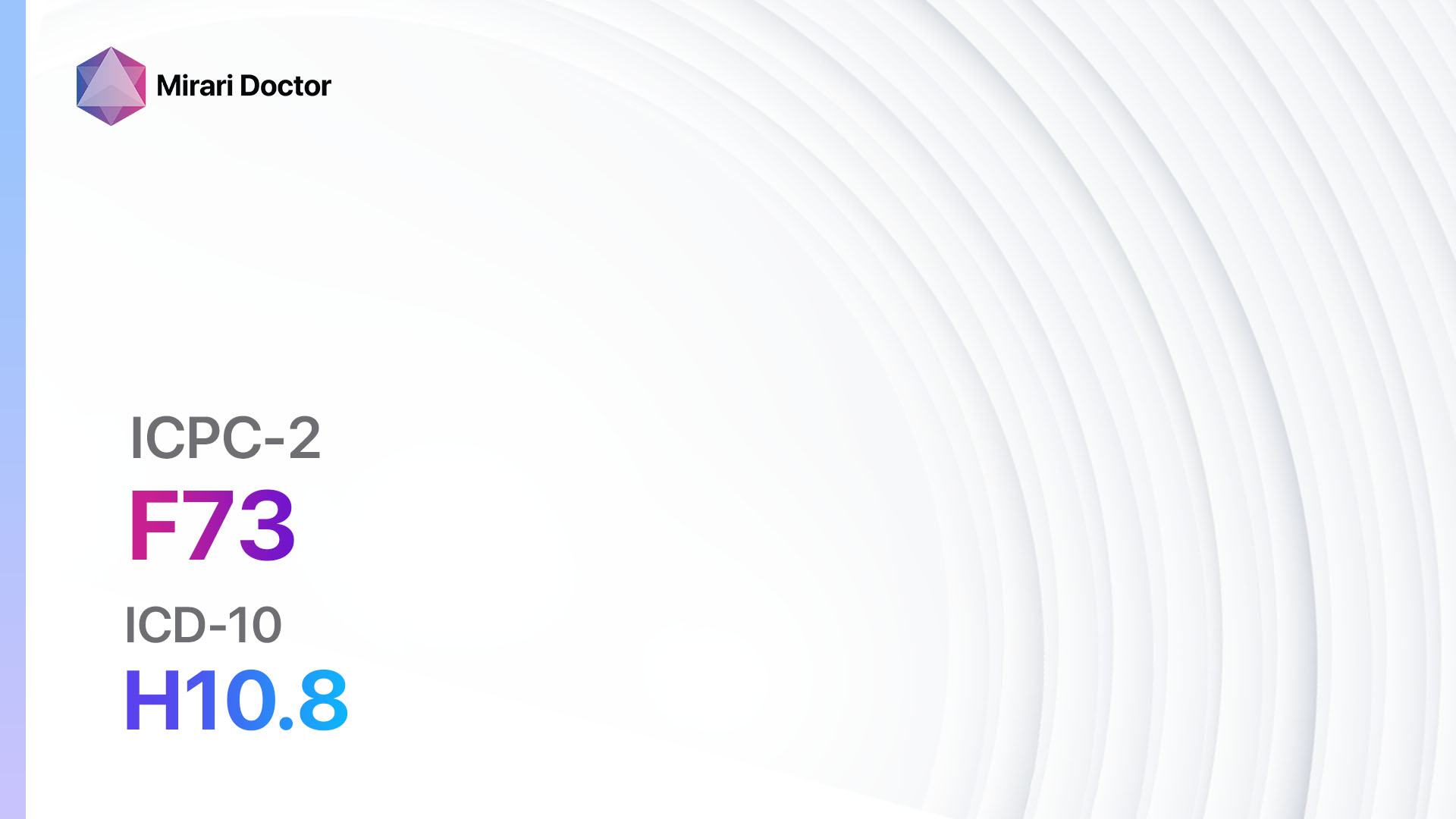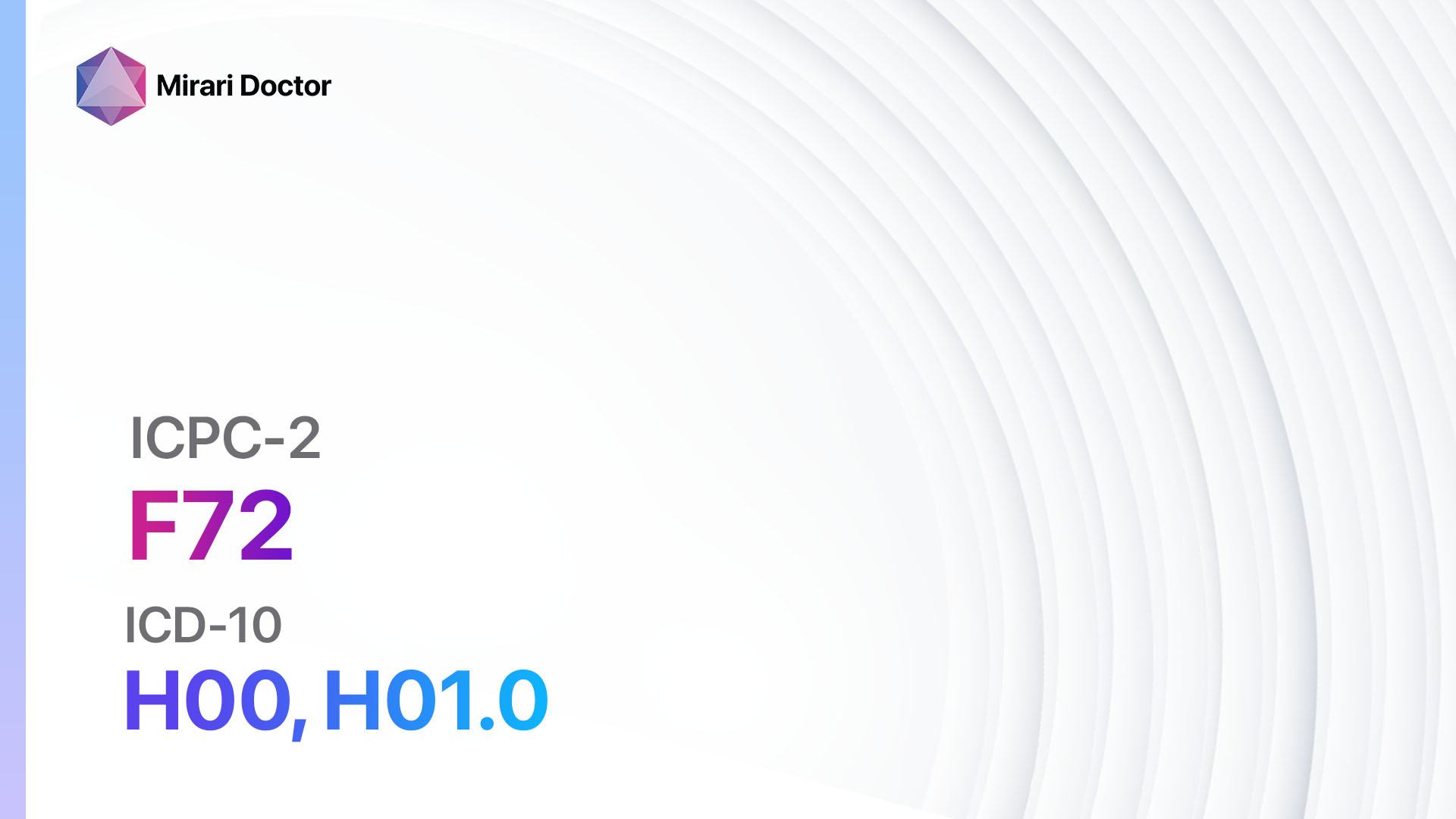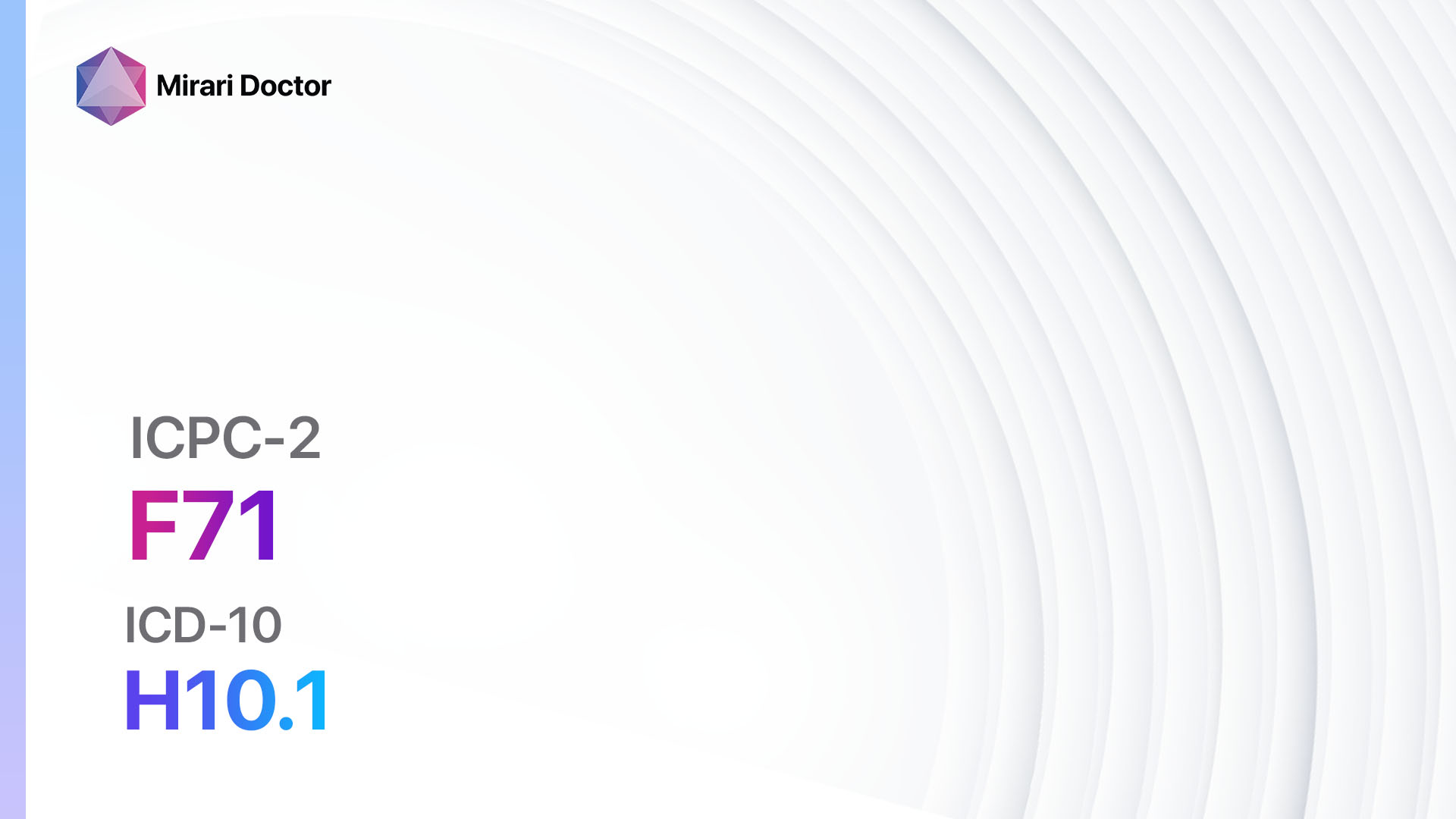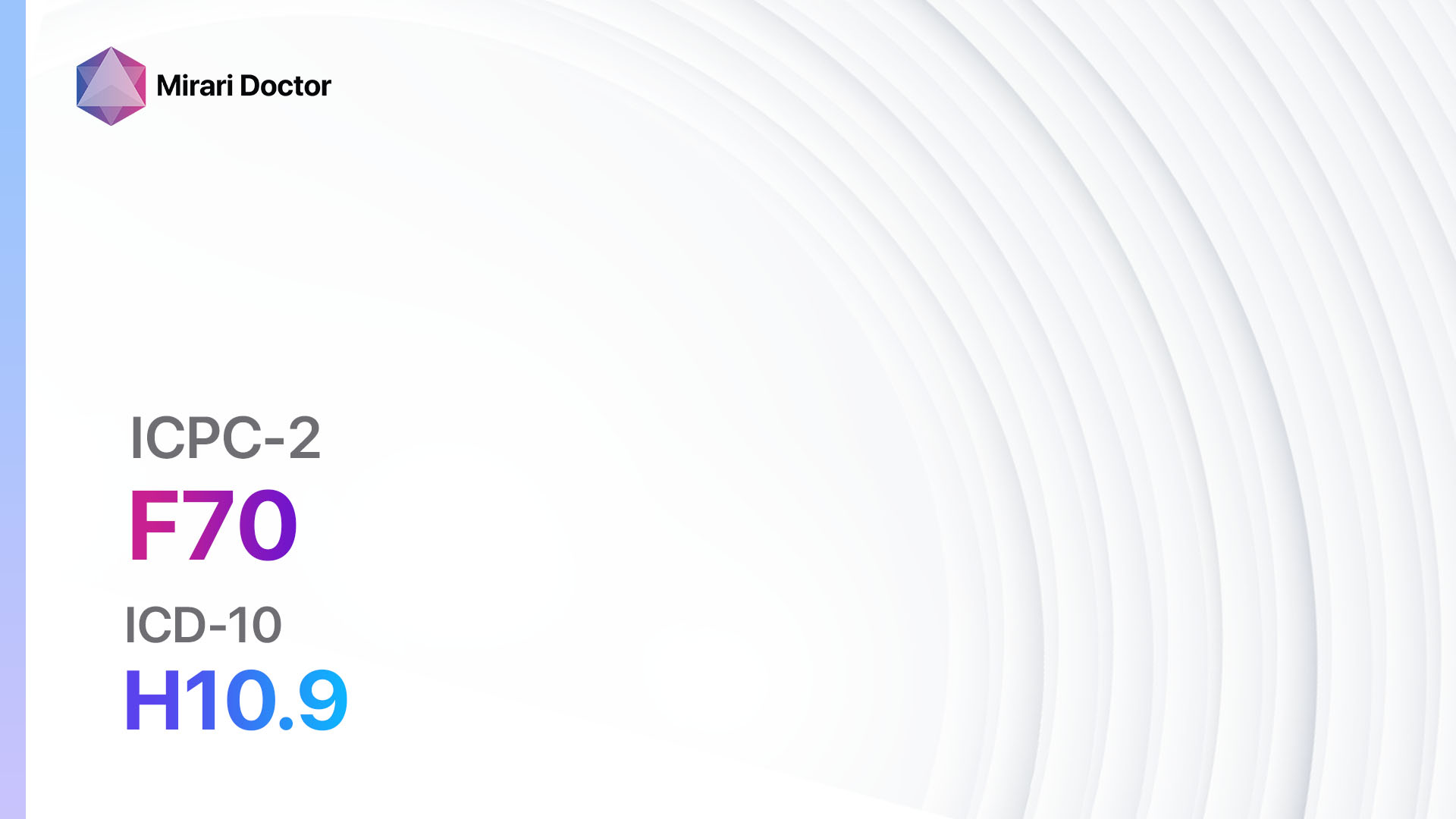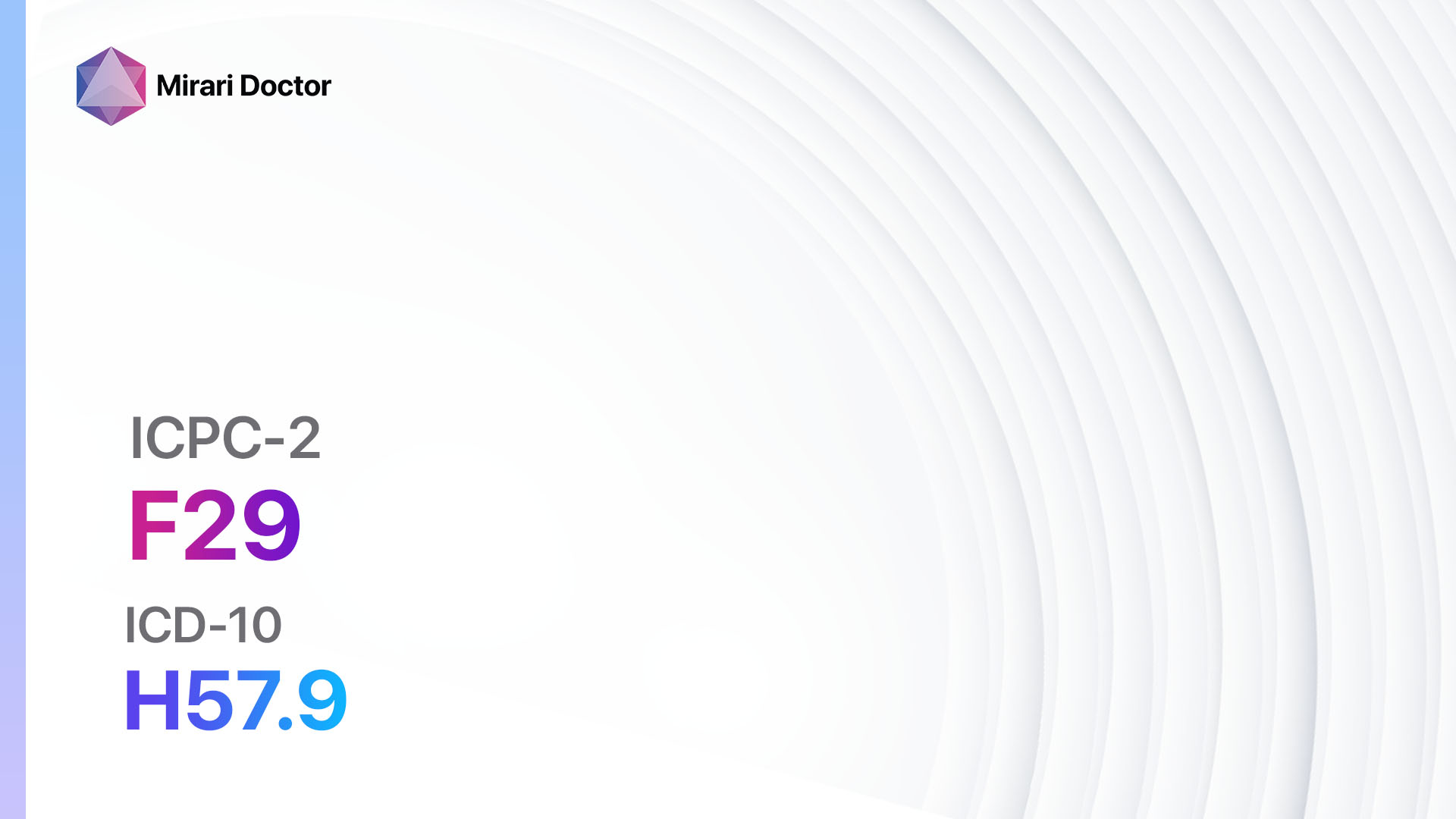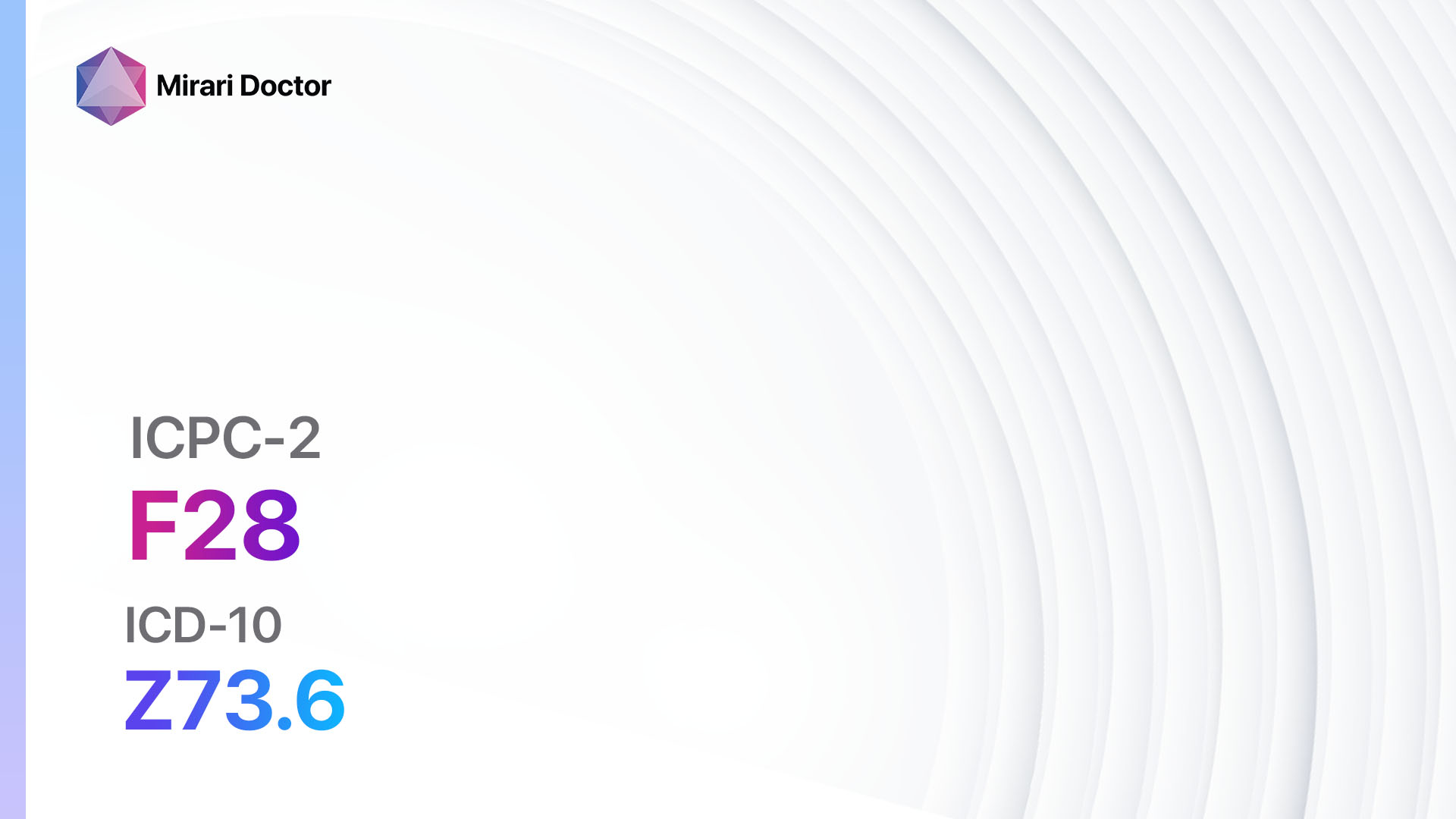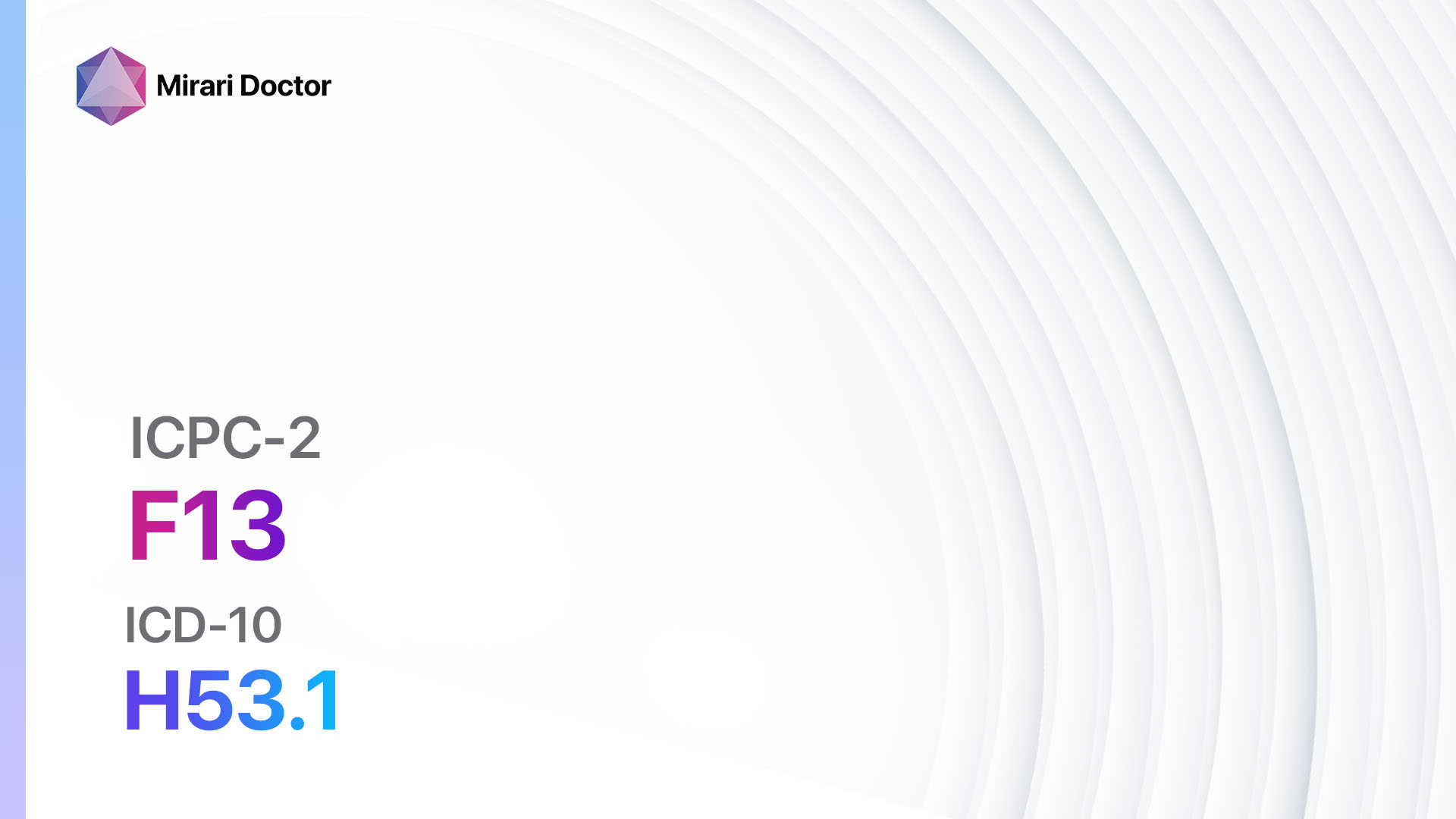
Introduction
Eye sensation abnormal refers to any abnormal sensations or discomfort experienced in the eye. It can manifest as itching, burning, dryness, or a foreign body sensation[1]. This condition can be caused by various factors, including dry eye syndrome, allergies, eye infections, or underlying medical conditions[2]. The aim of this guide is to provide a comprehensive overview of the symptoms, causes, diagnostic steps, possible interventions, and lifestyle modifications for eye sensation abnormal.
Codes
Symptoms
- Itching: A persistent urge to scratch the eye.
- Burning: A sensation of heat or burning in the eye.
- Dryness: A feeling of dryness or grittiness in the eye.
- Foreign body sensation: The sensation of having something in the eye[5].
Causes
- Dry eye syndrome: Insufficient tear production or poor tear quality.
- Allergies: An allergic reaction to substances such as pollen, dust mites, or pet dander.
- Eye infections: Bacterial or viral infections affecting the eye.
- Contact lens wear: Improper use or poor hygiene of contact lenses.
- Environmental factors: Exposure to dry or windy environments.
- Underlying medical conditions: Conditions such as blepharitis, Sjogren’s syndrome, or autoimmune diseases[6].
Diagnostic Steps
Medical History
- Gather information about the patient’s symptoms, including the duration, frequency, and severity.
- Ask about any previous eye conditions or treatments.
- Inquire about any allergies or underlying medical conditions.
- Assess the patient’s use of contact lenses and their hygiene practices.
- Determine any environmental factors that may contribute to the symptoms[7].
Physical Examination
- Inspect the external structures of the eye for any signs of inflammation or infection.
- Evaluate the eyelids for redness, swelling, or crusting.
- Assess the tear film quality and quantity using a slit lamp examination.
- Measure the tear production using the Schirmer’s test.
- Check for any corneal or conjunctival abnormalities[8].
Laboratory Tests
- Tear osmolarity test: Measures the saltiness of tears to assess tear film stability.
- Conjunctival scraping or swab: Collects samples for laboratory analysis to identify any infectious agents.
- Allergy testing: Determines specific allergens that may be causing the symptoms[9].
Diagnostic Imaging
- None typically required for eye sensation abnormal.
Other Tests
- Fluorescein or rose bengal staining: Detects any corneal or conjunctival abnormalities.
- Meibomian gland evaluation: Assesses the function and structure of the meibomian glands.
- Tear breakup time test: Measures the time it takes for tears to break up on the ocular surface[10].
Follow-up and Patient Education
- Schedule a follow-up appointment to monitor the effectiveness of interventions.
- Educate the patient about proper eye hygiene and contact lens care.
- Provide information on environmental modifications to reduce symptoms.
- Discuss the importance of regular eye examinations for early detection and management of any underlying conditions.
Possible Interventions
Traditional Interventions
Medications:
Top 5 drugs for eye sensation abnormal:
- Artificial tears (e.g., Systane, Refresh):
- Cost: $5-$15 per bottle.
- Contraindications: Hypersensitivity to ingredients.
- Side effects: Temporary blurred vision.
- Severe side effects: None reported.
- Drug interactions: None reported.
- Warning: Use as directed and avoid contamination of the bottle.
- Antihistamine eye drops (e.g., Zaditor, Alaway):
- Cost: $10-$20 per bottle.
- Contraindications: Hypersensitivity to ingredients.
- Side effects: Temporary stinging or burning sensation.
- Severe side effects: None reported.
- Drug interactions: None reported.
- Warning: Use as directed and avoid contact with soft contact lenses.
- Steroid eye drops (e.g., Prednisolone, Lotemax):
- Cost: $20-$50 per bottle.
- Contraindications: Active eye infections, glaucoma.
- Side effects: Temporary increase in eye pressure, cataract formation.
- Severe side effects: None reported with short-term use.
- Drug interactions: None reported.
- Warning: Use as directed and follow up with an eye care professional.
- Cyclosporine eye drops (e.g., Restasis, Cequa):
- Cost: $200-$300 per bottle.
- Contraindications: Hypersensitivity to ingredients.
- Side effects: Burning or stinging sensation, watery eyes.
- Severe side effects: None reported.
- Drug interactions: None reported.
- Warning: Use as directed and avoid contact with soft contact lenses.
- Antibiotic eye drops (e.g., Tobramycin, Ciprofloxacin):
- Cost: $10-$30 per bottle.
- Contraindications: Hypersensitivity to ingredients.
- Side effects: Temporary stinging or burning sensation.
- Severe side effects: None reported.
- Drug interactions: None reported.
- Warning: Use as directed and complete the full course of treatment.
Alternative Drugs:
- Lubricating ointments (e.g., Refresh PM): Provides longer-lasting relief for severe dryness. Cost: $10-$20 per tube.
- Mast cell stabilizers (e.g., Alocril, Alamast): Prevents the release of histamine in allergic reactions. Cost: $50-$100 per bottle.
- Corticosteroid eye ointments (e.g., FML, Maxidex): Provides anti-inflammatory effects for more severe symptoms. Cost: $20-$50 per tube.
- Antiviral eye drops (e.g., Trifluridine, Ganciclovir): Treats viral eye infections such as herpes simplex keratitis. Cost: $50-$100 per bottle.
- Immunomodulators (e.g., Lifitegrast, Xiidra): Modulates the immune response in chronic dry eye. Cost: $200-$300 per bottle.
Surgical Procedures:
- None typically required for eye sensation abnormal.
Alternative Interventions
- Warm compresses: Applying warm compresses to the eyes can help relieve symptoms of dryness and inflammation. Cost: Free.
- Blink exercises: Regularly blinking and taking breaks from activities that require prolonged visual focus can help reduce eye strain. Cost: Free.
- Omega-3 fatty acid supplements: Taking omega-3 fatty acid supplements may help improve tear production and reduce dryness. Cost: $10-$30 per bottle.
- Eyelid hygiene: Proper eyelid hygiene, including gentle cleansing and massage, can help manage symptoms of blepharitis. Cost: Varies depending on the specific products used.
- Acupuncture: May help improve blood flow and reduce eye discomfort. Cost: $60-$120 per session.
Lifestyle Interventions
- Humidifiers: Using a humidifier in the home or office can help increase moisture in the air and reduce dryness. Cost: $20-$100.
- Avoiding irritants: Avoiding exposure to smoke, dust, and other irritants can help minimize eye discomfort. Cost: Free.
- Wearing sunglasses: Wearing sunglasses with UV protection can help shield the eyes from harmful UV rays and reduce dryness. Cost: $10-$200.
- Proper contact lens care: Following proper contact lens hygiene practices can help prevent eye infections and reduce discomfort. Cost: Varies depending on the specific contact lens solutions used.
- Dietary modifications: Consuming a balanced diet rich in fruits, vegetables, and omega-3 fatty acids can support overall eye health. Cost: Varies depending on food choices.
It is important to note that the cost ranges provided are approximate and may vary depending on the location and availability of the interventions.
Mirari Cold Plasma Alternative Intervention
Understanding Mirari Cold Plasma
- Safe and Non-Invasive Treatment: Mirari Cold Plasma is a safe and non-invasive treatment option for various skin conditions. It does not require incisions, minimizing the risk of scarring, bleeding, or tissue damage.
- Efficient Extraction of Foreign Bodies: Mirari Cold Plasma facilitates the removal of foreign bodies from the skin by degrading and dissociating organic matter, allowing easier access and extraction.
- Pain Reduction and Comfort: Mirari Cold Plasma has a local analgesic effect, providing pain relief during the treatment, making it more comfortable for the patient.
- Reduced Risk of Infection: Mirari Cold Plasma has antimicrobial properties, effectively killing bacteria and reducing the risk of infection.
- Accelerated Healing and Minimal Scarring: Mirari Cold Plasma stimulates wound healing and tissue regeneration, reducing healing time and minimizing the formation of scars.
Mirari Cold Plasma Prescription
Video instructions for using Mirari Cold Plasma Device – F13 Eye sensation abnormal (ICD-10:H53.1)
| Mild | Moderate | Severe |
| Mode setting: 1 (Infection) Location: 7 (Neuro system & ENT) Morning: 15 minutes, Evening: 15 minutes |
Mode setting: 1 (Infection) Location: 7 (Neuro system & ENT) Morning: 30 minutes, Lunch: 30 minutes, Evening: 30 minutes |
Mode setting: 1 (Infection) Location: 7 (Neuro system & ENT) Morning: 30 minutes, Lunch: 30 minutes, Evening: 30 minutes |
| Mode setting: 2 (Wound Healing) Location: 7 (Neuro system & ENT) Morning: 15 minutes, Evening: 15 minutes |
Mode setting: 2 (Wound Healing) Location: 7 (Neuro system & ENT) Morning: 30 minutes, Lunch: 30 minutes, Evening: 30 minutes |
Mode setting: 2 (Wound Healing) Location: 7 (Neuro system & ENT) Morning: 30 minutes, Lunch: 30 minutes, Evening: 30 minutes |
| Mode setting: 3 (Antiviral Therapy) Location: 7 (Neuro system & ENT) Morning: 15 minutes, Evening: 15 minutes |
Mode setting: 3 (Antiviral Therapy) Location: 7 (Neuro system & ENT) Morning: 30 minutes, Lunch: 30 minutes, Evening: 30 minutes |
Mode setting: 3 (Antiviral Therapy) Location: 7 (Neuro system & ENT) Morning: 30 minutes, Lunch: 30 minutes, Evening: 30 minutes |
| Total Morning: 45 minutes approx. $7.50 USD, Evening: 45 minutes approx. $7.50 USD |
Total Morning: 90 minutes approx. $15 USD, Lunch: 90 minutes approx. $15 USD, Evening: 90 minutes approx. $15 USD, |
Total Morning: 90 minutes approx. $15 USD, Lunch: 90 minutes approx. $15 USD, Evening: 90 minutes approx. $15 USD, |
| Usual treatment for 7-60 days approx. $105 USD – $900 USD | Usual treatment for 6-8 weeks approx. $1,890 USD – $2,520 USD |
Usual treatment for 3-6 months approx. $4,050 USD – $8,100 USD
|
 |
|
Use the Mirari Cold Plasma device to treat Eye sensation abnormal effectively.
WARNING: MIRARI COLD PLASMA IS DESIGNED FOR THE HUMAN BODY WITHOUT ANY ARTIFICIAL OR THIRD PARTY PRODUCTS. USE OF OTHER PRODUCTS IN COMBINATION WITH MIRARI COLD PLASMA MAY CAUSE UNPREDICTABLE EFFECTS, HARM OR INJURY. PLEASE CONSULT A MEDICAL PROFESSIONAL BEFORE COMBINING ANY OTHER PRODUCTS WITH USE OF MIRARI.
Step 1: Cleanse the Skin
- Start by cleaning the affected area of the skin with a gentle cleanser or mild soap and water. Gently pat the area dry with a clean towel.
Step 2: Prepare the Mirari Cold Plasma device
- Ensure that the Mirari Cold Plasma device is fully charged or has fresh batteries as per the manufacturer’s instructions. Make sure the device is clean and in good working condition.
- Switch on the Mirari device using the power button or by following the specific instructions provided with the device.
- Some Mirari devices may have adjustable settings for intensity or treatment duration. Follow the manufacturer’s instructions to select the appropriate settings based on your needs and the recommended guidelines.
Step 3: Apply the Device
- Place the Mirari device in direct contact with the affected area of the skin. Gently glide or hold the device over the skin surface, ensuring even coverage of the area experiencing.
- Slowly move the Mirari device in a circular motion or follow a specific pattern as indicated in the user manual. This helps ensure thorough treatment coverage.
Step 4: Monitor and Assess:
- Keep track of your progress and evaluate the effectiveness of the Mirari device in managing your Eye sensation abnormal. If you have any concerns or notice any adverse reactions, consult with your health care professional.
Note
This guide is for informational purposes only and should not replace the advice of a medical professional. Always consult with your healthcare provider or a qualified medical professional for personal advice, diagnosis, or treatment. Do not solely rely on the information presented here for decisions about your health. Use of this information is at your own risk. The authors of this guide, nor any associated entities or platforms, are not responsible for any potential adverse effects or outcomes based on the content.
Mirari Cold Plasma System Disclaimer
- Purpose: The Mirari Cold Plasma System is a Class 2 medical device designed for use by trained healthcare professionals. It is registered for use in Thailand and Vietnam. It is not intended for use outside of these locations.
- Informational Use: The content and information provided with the device are for educational and informational purposes only. They are not a substitute for professional medical advice or care.
- Variable Outcomes: While the device is approved for specific uses, individual outcomes can differ. We do not assert or guarantee specific medical outcomes.
- Consultation: Prior to utilizing the device or making decisions based on its content, it is essential to consult with a Certified Mirari Tele-Therapist and your medical healthcare provider regarding specific protocols.
- Liability: By using this device, users are acknowledging and accepting all potential risks. Neither the manufacturer nor the distributor will be held accountable for any adverse reactions, injuries, or damages stemming from its use.
- Geographical Availability: This device has received approval for designated purposes by the Thai and Vietnam FDA. As of now, outside of Thailand and Vietnam, the Mirari Cold Plasma System is not available for purchase or use.
References
- Urgacz, A., Mrukwa, E., & Gawlik, R. (2015). Adverse events in allergy sufferers wearing contact lenses. Postepy dermatologii i alergologii, 32(4), 267–270. https://doi.org/10.5114/pdia.2015.53323
- Abelson, M. B., Ousler, G. W., 3rd, Nally, L. A., Welch, D., & Krenzer, K. (2002). Alternative reference values for tear film break up time in normal and dry eye populations. Advances in experimental medicine and biology, 506(Pt B), 1121–1125. https://doi.org/10.1007/978-1-4615-0717-8_157
- ICPC-2 – English. (n.d.). PH3C. Retrieved June 17, 2024, from http://www.ph3c.org/PH3C/docs/27/000496/0000908.pdf
- 2023 ICD-10-CM Diagnosis Code H53.1: Subjective visual disturbances. (n.d.). ICD10Data.Com. Retrieved June 17, 2024, from https://www.icd10data.com/ICD10CM/Codes/H00-H59/H53-H54/H53-/H53.1
- Dry Eye Syndrome. (2019, October 3). National Eye Institute. https://www.nei.nih.gov/learn-about-eye-health/eye-conditions-and-diseases/dry-eye-syndrome
- Bron, A. J., de Paiva, C. S., Chauhan, S. K., Bonini, S., Gabison, E. E., Jain, S., Knop, E., Markoulli, M., Ogawa, Y., Perez, V., Uchino, Y., Yokoi, N., Zoukhri, D., & Sullivan, D. A. (2017). TFOS DEWS II pathophysiology report. The ocular surface, 15(3), 438–510. https://doi.org/10.1016/j.jtos.2017.05.011
- Wolffsohn, J. S., Arita, R., Chalmers, R., Djalilian, A., Dogru, M., Dumbleton, K., Gupta, P. K., Karpecki, P., Lazreg, S., Pult, H., Sullivan, B. D., Tomlinson, A., Tong, L., Villani, E., Yoon, K. C., Jones, L., & Craig, J. P. (2017). TFOS DEWS II Diagnostic Methodology report. The ocular surface, 15(3), 539–574. https://doi.org/10.1016/j.jtos.2017.05.001
- Lemp, M. A., Bron, A. J., Baudouin, C., Benítez Del Castillo, J. M., Geffen, D., Tauber, J., Foulks, G. N., Pepose, J. S., & Sullivan, B. D. (2011). Tear osmolarity in the diagnosis and management of dry eye disease. American journal of ophthalmology, 151(5), 792–798.e1. https://doi.org/10.1016/j.ajo.2010.10.032
- Leonardi, A., Bogacka, E., Fauquert, J. L., Kowalski, M. L., Groblewska, A., Jedrzejczak-Czechowicz, M., Doan, S., Marmouz, F., Demoly, P., & Delgado, L. (2012). Ocular allergy: recognizing and diagnosing hypersensitivity disorders of the ocular surface. Allergy, 67(11), 1327–1337. https://doi.org/10.1111/all.12009
- Lemp, M. A., Crews, L. A., Bron, A. J., Foulks, G. N., & Sullivan, B. D. (2012). Distribution of aqueous-deficient and evaporative dry eye in a clinic-based patient cohort: a retrospective study. Cornea, 31(5), 472–478. https://doi.org/10.1097/ICO.0b013e318225415a
Related articles
Made in USA


